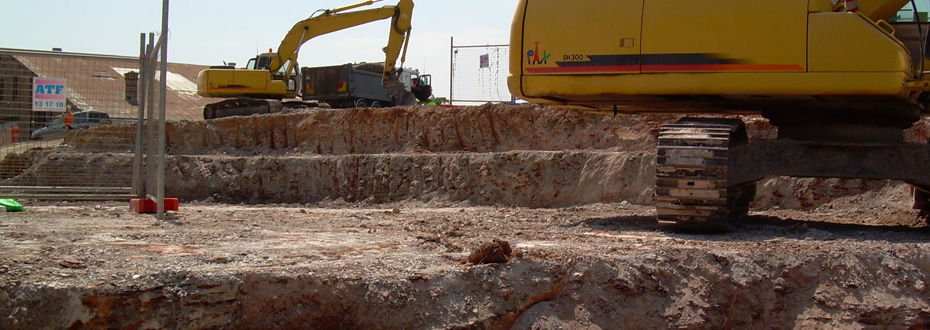

InSite Remediation Services has extensive experience in a range of soil remediation methodologies including, but not limited to:
InSite has adopted and innovated technologies to suit individual soil types and contaminants, eliminating or reducing the quantity of waste requiring costly landfill disposal. InSite's soil remediation processes allow savings to be passed on to clients by treating soil on site, and heavily reducing off-site disposal costs and waste generation.
CASE STUDY: Biopiles, odour management, water treatment and asbestos management
At a site in Newcastle, NSW, InSite established a biopile system for the treatment of 10,000m3 of hydrocarbon and friable asbestos contaminated soil. InSite designed, commissioned, and operated an odour ring line and implemented innovative, strict odour controls as part of biopile system. The odour control system enabled the client to have a NSW EPA notice lifted, enabling completion of the next stage of works.
Through close consultation with the client, InSite also designed a site-specific water treatment plant used tp treat over 5 ML of contaminated groundwater, prior to discharge to sewer. InSite's installation and operation of the system allowed dewatering during the first stage excavations of the development, and management of shallow groundwater during remedial excavation and backfilling.
CASE STUDY: Soil remediation using a trommel
During refurbishment works of a service station in suburban Melbourne, InSite was engaged to excavate, stockpile, and treat hydrocarbon contaminated soil using its innovative trommel system. The trommel was suitable for the limited space available for treatment due to the relatively small footprint required for operation.
Remediating the smear zone, the trommel system captured volatile organic compounds released from the soil. The off-gas was treated through a granular activated carbon adsorption system.
The on-site trommel treatment process provided substantial cost savings for the client. It significantly reduced the quantity of soil disposed of to landfill, with the majority of the originally impacted soil suitably remediated for reuse on site.
CASE STUDY: Remediating a large ethanol spill
Following a large-scale release of ethanol as a result of a tanker roll-over, InSite undertook remediation works, excavating impacted soils to a depth of up to 4 m on a rural property.
Approximately 2,500 m3 of ethanol and TPH contaminated soil was stockpiled and remediated on site using a windrow turner. Over the course of a number of weeks, this soil remediation process was used to volatilise the ethanol, remediating the majority of the impacted soil.
InSite's innovative methodology resulted in significant disposal cost reductions for the client. By the conclusion of remediation works, only 350 tonnes of heavily impacted soil required off-site disposal - a small proportion of the total mass initially contaminated.
Make-good works also undertaken by InSite included refilling and compacting the excavated area, contouring the site, and installing drainage and erosion control systems.
CASE STUDY: Trommel treatment at an east coast airport
InSite was engaged to conduct site remediation works at an east coast airport to comply with auditor requirements and achieve site sign off. Works included infrastructure removal, contaminated groundwater treatment, and contaminated soil excavation and treatment on a site adjacent to the airport’s main tarmac.
A project exclusion zone was set up using water-filled traffic barriers to segregate the remediation work area from airside operations prior to mobilisation of InSite’s trommel system.
InSite's trommel was used to treat 720m3 of jet fuel impacted soil associated with a historical tank leak. The trommel’s vapour recovery system processed vapours released from the treatment process through granular activated carbon adsorbers prior to venting to the atmosphere.
All the excavated material was analysed and confirmed as suitable for reuse on site, avoiding the need for costly off-site disposal.